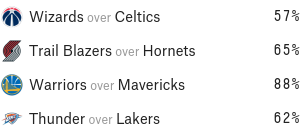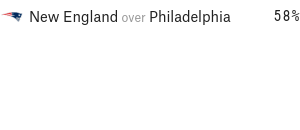The stage has never been bigger for Tottenham Hotspur’s star striker Harry Kane. On Saturday, Spurs defeated Arsenal 1-0 in the North London Derby, one of the Premier League’s most storied rivalries. Now it’s off to Turin, Italy, where they’ll take on Juventus, one of Europe’s most storied clubs, in the Champions League round of 16. And there will never be a better moment than now for Kane to demonstrate, in front of the entire soccer-loving world, that he just might be the best pure striker alive.
Kane won himself a place in history when he notched his 100th English Premier League goal on a controversial stoppage time penalty two weekends ago against Liverpool. It’s an incredible achievement for a player who, at 24 years old, is only just now hitting the prime years of his career. Kane is not the fastest ever to the century mark, but only Alan Shearer managed it in fewer appearances than Kane’s 141, and only Wayne Rooney, Robbie Fowler and Michael Owen did it at a younger age. The milestone also just happens to come during the best season of Kane’s young career. If anything, his league-leading 23 goals undersells just how good Kane has been.
The top of the Premier League scoring table is increasingly split between traditional forwards, like Kane, Sergio Aguero and Romelu Lukaku, and more hybrid attacking wingers, like Mohamed Salah and Raheem Sterling, which makes it difficult to define what the center forward role looks like in modern soccer. The same problem crops up around the rest of Europe. Calling Lionel Messi a center forward undersells all the things he does for Barcelona, especially considering that he’s playing next to, behind and generally all around a truer version of a center forward in Luis Suarez. At Paris-Saint Germain, Neymar might be the best attacking player in the world, but he’s also a winger while Edinson Cavani occupies the center forward position. The line between forward and winger is increasingly blurry, and a list of the most productive scorers in Europe is littered with goal-scoring wingers. But Kane still sits atop that list.
Kane is Europe’s best pure scorer
The top goal scorers in the five major European leagues this season
| Shots | ||||||
|---|---|---|---|---|---|---|
| Player | Team | Games | Total | on goal | goals | |
| 1 | H. Kane | Tottenham | 26 | 150 | 61 | 23 |
| 2 | M. Salah | Liverpool | 26 | 103 | 49 | 22 |
| 3 | E. Cavani | PSG | 23 | 81 | 41 | 21 |
| S. Agüero | Manchester City | 22 | 88 | 39 | 21 | |
| 5 | L. Messi | Barcelona | 23 | 132 | 61 | 20 |
| C. Immobile | Lazio | 21 | 75 | 37 | 20 | |
| 7 | Neymar | PSG | 18 | 82 | 37 | 19 |
| R. Lewandowski | Bayern Munich | 21 | 87 | 35 | 19 | |
| 9 | M. Icardi | Inter Milan | 22 | 68 | 38 | 18 |
| 10 | R. Falcao | Monaco | 20 | 59 | 30 | 17 |
| F. Quagliarella | Sampdoria | 23 | 86 | 38 | 17 | |
| 12 | N. Fekir | Lyon | 22 | 70 | 38 | 16 |
| L. Suárez | Barcelona | 20 | 76 | 38 | 16 | |
| 14 | R. Sterling | Manchester City | 25 | 63 | 26 | 15 |
| I. Aspas | Celta Vigo | 22 | 65 | 30 | 15 | |
| D. Mertens | Napoli | 24 | 89 | 35 | 15 | |
| 17 | F. Thauvin | Marseille | 25 | 92 | 34 | 14 |
| Mariano | Lyon | 24 | 70 | 32 | 14 | |
| P. Aubameyang* | Arsenal | 18 | 61 | 29 | 14 | |
| G. Higuaín | Juventus | 23 | 75 | 30 | 14 | |
| P. Dybala | Juventus | 19 | 75 | 30 | 14 | |
Kane posts tremendous numbers in many scoring measures. Looking at goals from open play (so removing penalty shots and direct free kicks), Kane is scoring 0.8 goals per 90 minutes. That’s the third-best rate in Europe’s big five leagues,Among players who have played at least 1000 minutes.
“>1 behind only Salah and Cavani. Kane has the second-most shots per 90 from open play as well, with 5.30. Only Cristiano Ronaldo, who is mired in a terrible shooting season, takes more shots, with 5.71 per 90. Only five other players are even over four shots per game: Roma’s Edin Dzeko, Napoli’s Lorenzo Insigne, Messi, Salah, and Bayern Munich’s Robert Lewandowski.In fact, if Kane stays on pace and finishes the season with more than five shots per 90 minutes, he’ll be one of only three players to do so in the last five years, joining Ronaldo (who did it four times) and Gonzalo Higuain, who managed it with Napoli in 2015/16.
“>2
Kane is similarly at the top of the list when it comes to expected goals per 90 minutes. His 0.78 expected goals per 90 tracks pretty closely with his actual goals scored and is good for fifth best among players with at least 1,000 minutes, trailing only Pierre-Emerick Aubameyang, who just transferred to Arsenal, Gabriel Jesus of Manchester City, Ronaldo and Lewandowski. The fact that Kane’s finishing is roughly in line with his expected goals is an important marker of how he has developed from last season to this year.
His scoring on shots from open play actually remains essentially unchanged from last year, going from 0.81 to 0.80, but his expected goal rate last season was much lower, only 0.48. Finishing more chances than expected, as Kane did a year ago, is a real skill but it’s also almost impossible to do consistently, and players’ numbers are incredibly noisy and undergo wild fluctuations. Some of Kane’s goal scoring last season came on the types of wonderful finishes that typically fly over the bar, or on contested headers that usually glance just wide. In other words, if Kane’s current season were similar to last year, it’s very likely that his goal scoring would have gone down. Instead, Kane has upped his game, creating and taking more shots and better shots. Last season, Kane scored like a great striker, but he played like a very good one. This year, he’s both playing and scoring like one of the best in the game.
The case for Kane as one of the world’s best strikers is easy to make, but once you get up into the rarified air of players like Salah, Lewandowski and Aubameyang, differentiating between them becomes difficult. Where Kane stands out is in just how big a share of the team’s workload he takes on. Again looking at shots not including penalties and direct free kicks, there are 101 players in the top five leagues who have scored seven or more goals. Harry Kane takes 32.7 percent of his team’s shots when he’s on the field — none of the other 100 players are more involved. Ronaldo is second at 32.0 percent, Messi is third at 31.4. (Ronaldo and Messi, of course, both take a large number of direct free kicks that aren’t getting counted here, while Kane gets credit for all the shots he accumulates on set plays that aren’t direct free kicks. So Kane has some advantage that comes from how we’re defining the center forward role.)
Kane is similarly dominant when it comes to expected goals from these shots. When he’s on the field, he accounts for a whopping 41.7 percent of Spurs’ expected goals, the third most of this set of players. Only Antonio Sanabria of Real Betis, who is having an improbable season with seven goals in six substitute appearances, and Cristhian Stuani of the surprisingly competent Spanish side Girona are responsible for a higher percentage of their teams’ expected goals. This is the primary argument for Kane. While some players have scored more goals, and some players may have slightly higher underlying expected goals numbers, no strikers in the world have put up the gaudy numbers Kane has while accounting for as high a share of their team’s shooting and finishing.
Harry Kane isn’t a complete forward. His job isn’t to facilitate play, or bring wingers into the game, or create holes in the defense for his teammates to take advantage of. Tottenham Hotspur’s star striker does one thing: He scores. But that goal scoring has Tottenham challenging for a top-four place in the Premier League and has gotten Spurs into the knockout rounds of the Champions League. Nobody scores as much while accounting for as high a percentage of their team’s scoring. He’s the ultimate scoring forward, and at only 24 years old, he’s likely to be a dominant force for years to come.








